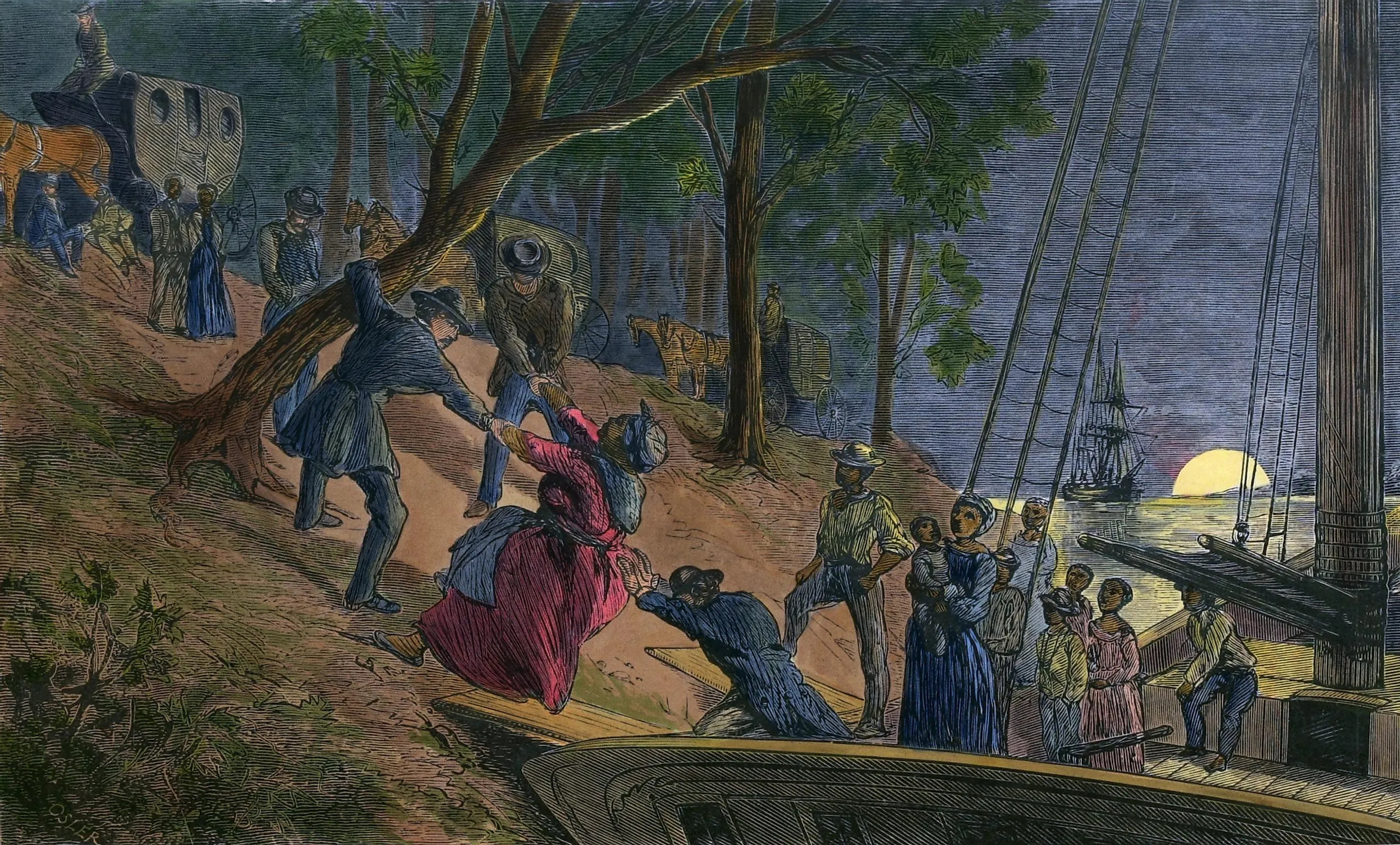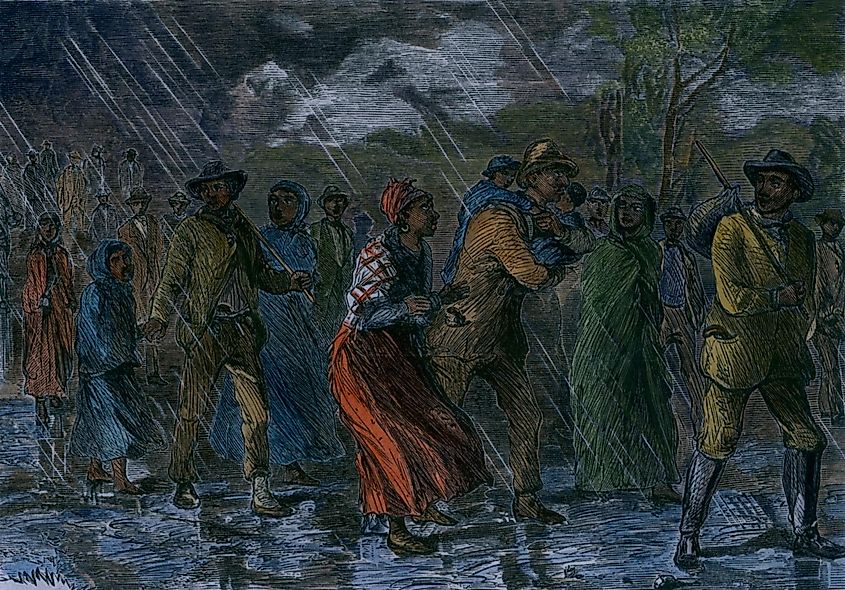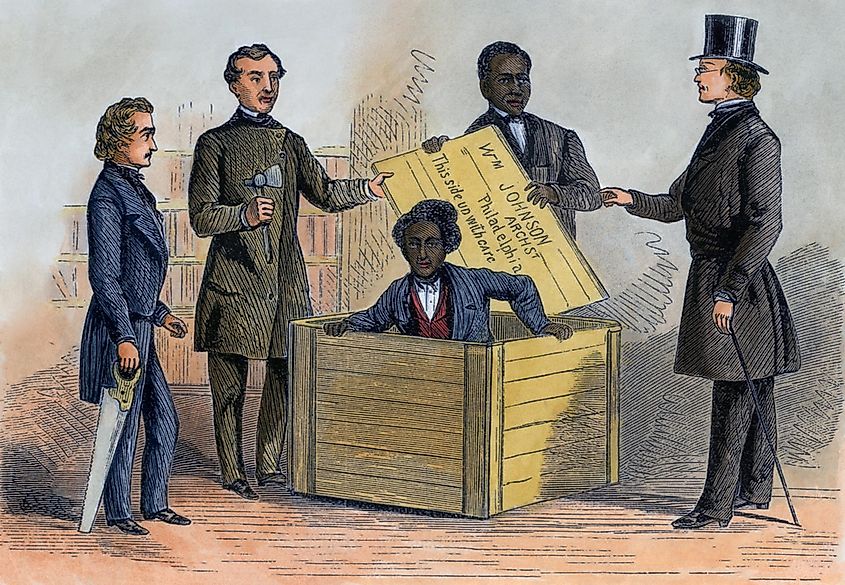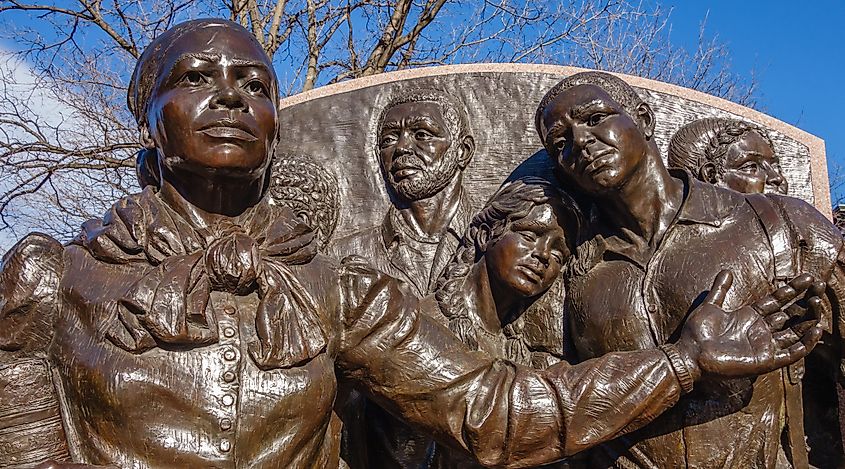
Underground Railroad
Throughout the US era of slavery, the historic Underground Railroad consisted of several places, route networks, and individuals who aided thousands of enslaved people reach freedom before the end of the American Civil War in 1865. The Underground Railroad, although metaphorical since it was not an actual railroad, helped enslaved people in the American South escape to the North despite the perilous nature of the journey.
Origin Of The Underground Railroad

After a provision in the "Act to Limit Slavery" of 1793 that stated that any enslaved individual became free upon arrival to Upper Canada, a number of enslaved African Americans attempted the journey to their freedom. In fact, towards the end of the 1700s, many Americans would help such enslaved individuals escape, most often through secrecy. By the early 1800s, this underground group of people, routes, and places enslaved people relied upon to escape became known as the "Underground Railroad." These routes were often organized by abolitionists, who opposed and longed to put an end to the practice of slavery.
The term originated from the word "Underground," which signifies secrecy, and "Railroad," which implies how people traverse particular routes to reach their destinations, often including many stops. Thus, even though it was not a literal railroad and did not run underground, the Underground Railroad incorporated several stops escapees would use, such as homes, churches, barns, and businesses. Usage of the term increased as the number of escapees using this network also increased.
The Dangerous Journey To The Promised Land
Given the operation's heavy secrecy, enslaved people willing to undertake the journey could not depend on any written instructions about who would help or where they should go. Instead, these individuals had to depend on tips by word-of-mouth from other enslaved individuals. Moreover, the network's covert activities were masked through the use of railroad terminologies, codes, and symbols. For instance, escaped enslaved people would be referred to as "passengers," "cargo," and "packages." In turn, passengers were dropped off at safe houses, known as "stations," located within various towns and cities, known as "terminals." The routes referred to as "lines" escapees would use crossed through 14 Northern states and two British North American colonies, which were Lower and Upper Canada.

Escaped individuals would frequently have to use various modes of transportation for land and water traversal. Although most would undertake the journey on foot, some would be transported in carriages, wagons, trains, and even horses. Most if not all traversals would occur during the night following the North Star to evade recapture chances. Escaped enslaved people had to come up with clever methods to escape recapture, such as fleeing on Sundays since the public could not be alerted until Monday, as that was when reward posters could be printed. Another method was fleeing during the Christmas holiday, as that was when White plantation owners would be least likely to notice them missing. Others would don disguises or hide within cargo, such as the case of Henry "Box" Brown in 1849, who was packed in a 3-foot-long box and shipped for 27 hours.
Conductors, Station Masters, And Other Agents Of Change
One of the terms used to maintain secrecy and keep the public and other slaveholders in the dark was "conductor," an individual who aided escapees throughout their journeys. Conductors would guide escaped individuals across several points, often by resorting to various forms of land and water transportation. Perhaps the most famous of these conductors was Harriet Tubman, who herself managed to escape slavery in 1849. Upon earning her freedom, she was determined to return to her former plantation and rescue her family members. This then expanded to her helping other enslaved individuals from Maryland through a total of 13 trips that resulted in approximately 70 individuals attaining their freedom.

On the other hand, "station masters" were individuals who took slaves into their safe houses and provided them with the basics needed to continue their journey. People who made travel arrangements for escapees by connecting them to conductors or station masters were known as "ticketing agents." Such individuals were frequently doctors or preachers, as their frequent need to travel helped conceal any of their abolitionist activities. An example of one such ticketing agent was Alexander Milton Ross, a Belleville-born doctor who would provide potential escapees with some of the necessary supplies to commence their escape.
Three notable figures who also acted as agents of change during the Underground Railroad period were Levi Coffin, Frederick Douglass, and William Still. Levi Coffin was a religious Quaker who moved to Indiana in 1826 and learned that his home happened to be situated on one of the Underground Railroad's routes. Upon Coffin and his wife Catherine's discovery, they decided to turn their home into a station that would help more than 3,000 freedom-seekers on their way to Canada. Frederick Douglass was himself a slave and escaped in 1838. As an outspoken writer, speaker, and supporter of the Underground railroad, he aided approximately 400 escapees on their journey. When it comes to William Still, an abolitionist movement leader and a free Black business owner, hundreds of enslaved people were helped reach the North. However, what was so significant about Still was the detailed records he would keep of all the individuals and families who came through his station, which in turn produced one of the clearest accounts of the Underground Railroad.
The Evolution Of Fugitive State Laws
Despite the passing of several laws by the US government prohibiting such actions, many Americans continued to help enslaved individuals escape. The first federal Fugitive Slave Law of 1793 gave local governments the right to capture and return any fugitives, even if they were in states that had outlawed slavery. Nevertheless, despite the looming threat of arrest and imprisonment of those aiding enslaved individuals, such assistance continued. In response, Congress was pressured by politicians from Southern slaveholding states to pass an updated Fugitive Slave Act in 1850 that inflicted much harsher consequences. Since all that was required from a slave catcher was for them to swear an oath that the accused was a fugitive, even if the individual was legally free, Black people were increasingly captured for subsequent rewards.
However, this law further amplified abolitionists into action, as widespread opposition led to revolts in Massachusetts, Pennsylvania, New York, and Wisconsin. Such opposition continued up until when Congress repealed both Fugitive Slave Acts on June 28, 1864, less than a year before the end of the American Civil War.











